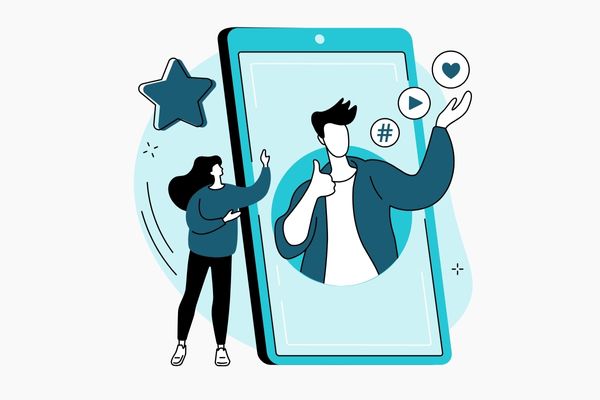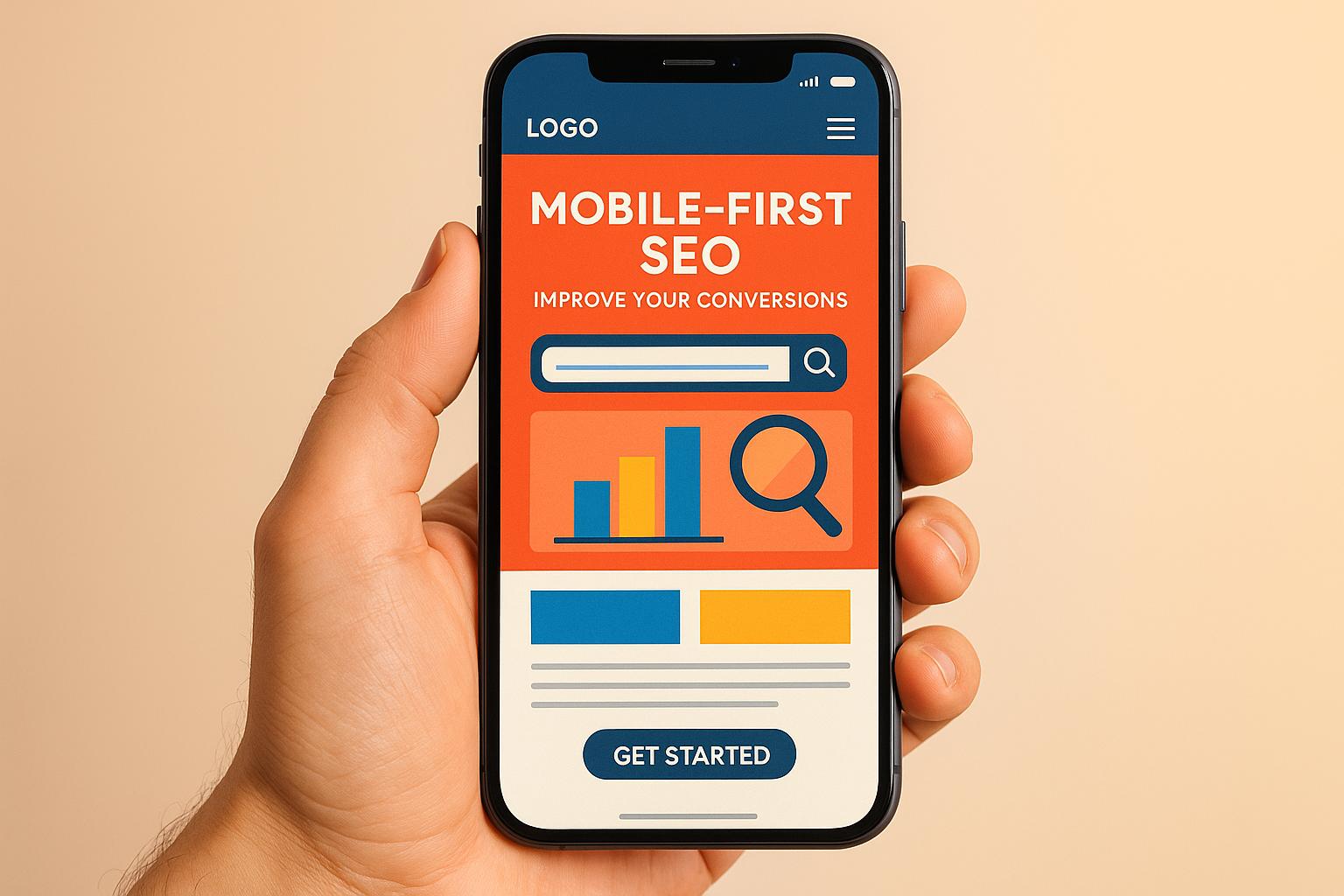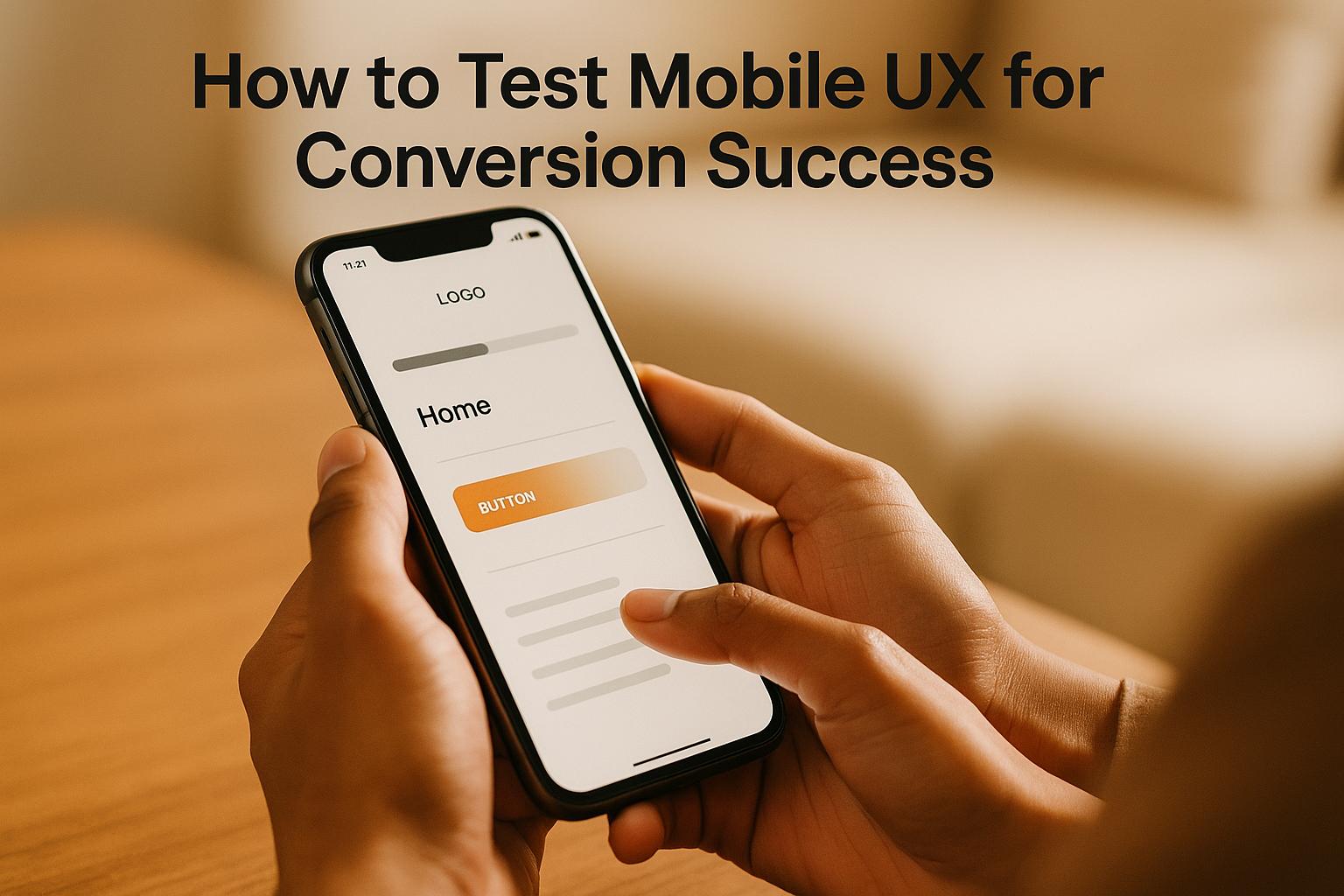

How Social Media Marketing Will Change in 2026: Stop Posting, Start Getting Found
How Social Media Marketing Will Change in 2026: Stop Posting, Start Getting Found
 24-11-2025 (Last modified: 24-11-2025)
24-11-2025 (Last modified: 24-11-2025)
Social media is no longer a place people visit after they have finished “real” research.
For a huge chunk of users, especially under 35, TikTok, Instagram, YouTube and Reddit are where research starts: which product to buy, which tool to try, what restaurant to visit, how to fix a problem. In 2025, almost two thirds of the world’s population uses social media, spending over 2 hours a day on it. (Smart Insights)
At the same time:
-
Around 54% of social media users say they use social platforms for product research.Fresh Pies
-
Surveys show that roughly three quarters of Gen Z internet users use TikTok as a search engine, and over half prefer it to Google for some queries.EMARKETER
-
Another study cited by Forbes found that about 67% of Gen Z use Instagram for search and 62% use TikTok.Forbes
So in 2026, social is not just where you post. It is where you are discovered.
This flips social media marketing on its head. You will need to:
-
Treat posts like search assets, not throwaway content
-
Optimise for social search algorithms, not just the feed
-
Use AI to scale production without turning your content into beige sludge

Let’s break down what is changing and how to get in front of it.
1. Social is the new search engine
Behaviour has shifted from “scrolling” to “searching”
Users now type real queries into social platforms:
-
“Best CRM for freelancers” on TikTok
-
“How to edit Reels like a pro” on YouTube
-
“Is this supplement legit?” on Reddit
-
“Autism friendly family holidays Spain” on Instagram and TikTok
YouTube already behaves like a classic search engine, with over 2.5 billion monthly users and a strong reputation as “the second largest search engine in the world”.charle.co.uk In 2025 YouTube began rolling out AI powered search result carousels that summarise topics and surface creator videos as answers, similar to Google’s AI Overviews.blog.youtube+1
TikTok is racing in the same direction. It has launched dedicated Search Ads campaigns that let brands target keyword based searches inside the app, turning curiosity into incremental purchases.TikTok For Business+2TikTok For Business+2 And TikTok’s own research shows that a high share of users say the platform has inspired them to buy a product.Michael Brito
Reddit is also leaning into search. Its new “Reddit Answers” tool uses AI to generate structured answers based on subreddit discussions, aiming to keep searchers inside Reddit instead of sending them to Google.The Verge
What we think: in 2026, more buyers will have their very first touchpoint with your brand via a search bar inside TikTok, Instagram, YouTube or Reddit, not Google.
Planning shifts from “content calendar” to “answer library”
If social equals search, then your feed needs to look more like a searchable knowledge base than a random content stream.
Instead of asking “What shall we post this week?”, the question becomes:
“Which questions do our ideal customers type into TikTok / Instagram / YouTube, and do we have content that clearly answers each one?”
For each core topic, you want a cluster of content:
-
Explainer video: “What is X and who is it for?”
-
Short “try this” video: a quick tip or before/after
-
Comparison: “X vs Y – which is better for [specific use]?”
-
Proof: testimonials, UGC, mini case studies
-
Deep dive: a playlist or series that makes you the go to source
That library is what gets surfaced by algorithms when people search.
2. Get ahead with social SEO
Social SEO is simply search optimisation inside social platforms.
The platforms are literally redesigning around it:
-
Instagram has shifted to a more keyword driven search model, and Google can now index public Instagram posts so they can appear in web search too.Bamboo Nine
-
Instagram and social media platforms are pushing brands to treat posts like search friendly assets with proper captions, alt text and topic planning, not just aesthetics.eyefulmedia.com+1
Here is how to adapt your content in 2026.
2.1 Treat captions like mini landing pages
Forget vague captions and random emojis.
You want captions that:
-
Include the specific query or phrase people might search
-
Use supporting keywords and variations naturally
-
Spell out the benefit or outcome clearly
-
Add a call to action that fits the search intent
Example:
Instead of: “New feature drop. We’re excited!”
Try: “Scheduling TikTok posts is a pain when you run multiple brands. This new calendar lets you batch schedule posts, see gaps at a glance and reuse your best performers.”
Still human, but loaded with the kind of language people actually type.
2.2 Optimise the whole asset, not just the text
There are several “hidden” signals platforms can use for search:
-
On screen text – headlines, captions and overlays with your main keyword
-
Spoken words – auto captions and transcripts give platforms another layer of context
-
Alt text on images and carousels
-
Playlists and series names on YouTube and TikTok
-
Profile fields – your handle, name field and bio should include your category or problem space
YouTube and other video platforms already analyse audio and visuals to understand topics. With AI powered search features expanding, expect this to get even more granular in 2026.RouteNote+1
So if you want to rank for “B2B social media reporting”, those words should appear somewhere in the title, caption, on screen text or spoken script, not just buried at the end of a hashtag list.
2.3 Build social keyword maps, not just hashtag lists
Classic hashtag research is not enough.
Instead:
-
Use platform search (TikTok, Instagram, YouTube) to see autocomplete suggestions around your niche
-
Look at “People also watched” or similar queries to build a topic map
-
Group content ideas around specific questions and intent, not just buzzwords
-
Track which phrases actually bring you search impressions and followers over time
Tools like Hootsuite and others are already positioning social SEO as a key part of planning, not just optimisation after posting.Hootsuite

3. Automate smarter with AI, not lazier
AI is now baked into nearly every layer of social marketing.
The question is no longer “Should we use AI?” but “Where does AI add leverage without killing our voice?”
A few things are already clear:
-
Around 60% of US adults say they use AI to search for information, and nearly three quarters of under 30s do the same. Younger adults are also far more likely to use AI for brainstorming.AP News
-
Meta says more than 4 million advertisers are already using its generative AI features for image, video and text ads.marketingdive.com
-
TikTok has launched Symphony, a full creative AI suite that can generate TikTok ready videos, avatars, scripts and translations from a few inputs.
That tells you where 2026 is going: AI will sit inside your existing tools and platforms, quietly speeding things up.
3.1 Build an AI assisted content pipeline
A practical 2026 workflow could look like this:
-
Research with AI + platform data
-
Feed real search queries and FAQs into an AI tool to generate topic clusters
-
Validate those clusters against TikTok and Instagram autocomplete and YouTube topics
-
-
Outline and scripting
-
Use AI to create draft scripts, hooks and outlines for each platform
-
Have a human tighten the language, add stories and correct nuance
-
-
Multi format production
-
Use tools like TikTok Symphony or editing apps to auto generate variants (sizes, cuts, subtitles)
-
Repurpose long form videos into Shorts, Reels, carousels and snippets
-
-
Content recycling
-
Turn video transcripts into email copy, blog posts and LinkedIn threads
-
Use AI to summarise comments into new content ideas and FAQs
-
The goal is not to mass produce bland content. The goal is to remove friction from all the boring bits so your team can focus on ideas, storytelling and proof.
3.2 Guardrails to avoid AI sludge
In 2026, “we use AI” will not be a competitive edge. “We use AI well” will be.
A few guardrails to keep:
-
Lock in a clear brand voice and always edit AI drafts back into that voice
-
Avoid generic stock visuals everywhere – mix AI with real footage, faces and UGC
-
Make sure every AI assisted asset still answers a real search query or customer question
-
Regularly test AI generated creative against human written versions instead of assuming it wins
4. Paid social search will feel more like intent marketing
One of the biggest under rated shifts coming into 2026 is how paid social will start to mirror classic search ads.
TikTok’s Search Ads already let advertisers bid on keywords inside TikTok’s search results page, combining intent with native video ads.
On the other side, YouTube is weaving AI powered search results and shopping features deeper into the viewing experience:
-
AI search result carousels that highlight relevant videos
-
AI overviews style snippets that summarise topics and point to creators
-
Shopping updates like product tagging and QR code purchasing from TV screens.
Put simply: more of your ad spend will target people actively searching inside social platforms, not just passively scrolling.
That changes how you structure campaigns:
-
Build search first creative that directly answers the query (“Best email tools for B2B founders”, “How to batch cook content for Reels”)
-
Use your social SEO keyword map as the starting point for search ad campaigns
-
Treat TikTok and YouTube search campaigns as mid to bottom funnel, like Google in 2015
5. Measurement: from vanity metrics to discovery metrics
If discovery is the goal, your dashboard needs a refresh.
The old focus:
-
Follower growth
-
Likes and comments
-
Raw reach
The 2026 focus:
-
Search impressions and search based views inside each platform
-
Saves, shares and replays, which signal that content answered a real need
-
Profile visits from search
-
Click throughs and conversions specifically attributed to social search campaigns
-
Creator driven revenue, as brands shift budgets to creators who already own attention online
Creator economy revenues are already projected to grow fast, with some estimates suggesting creator content will generate more ad revenue than traditional media and more than double again by 2030.The Guardian
So it makes sense to measure how your brand shows up in those creator driven discovery moments, not just how your owned channel performs.
6. Practical 2026 checklist: stop posting, start getting found
Here is a simple way to get ahead of the curve instead of chasing it.
6.1 Run a “social search audit”
For your main topics, search on:
-
TikTok
-
Instagram / Reels
-
YouTube
-
Reddit
Ask:
-
Which creators keep showing up?
-
What titles, hooks and visual styles dominate?
-
Which questions keep repeating in comments?
-
Where are the obvious content gaps you could fill?
6.2 Build a social keyword and topic map
-
List 20 to 50 phrases your buyers would search in each platform
-
Group them by intent: learn, compare, decide, troubleshoot
-
Map 2 to 3 content ideas to each phrase across video and carousels
6.3 Redesign your content calendar around “answer assets”
For each week or month:
-
Pick 1 or 2 core questions to focus on
-
Create one hero piece (YouTube, webinar clip, deep dive)
-
Slice it into 3 to 7 search optimised assets for short form video and carousels
-
Add at least one proof asset (UGC, case snippet, testimonial)
6.4 Layer in AI where it makes the most impact
-
Use AI for brainstorming, outlines and repurposing
-
Use platform tools like TikTok Symphony and Meta’s creative AI to scale variants.
-
Keep human control on messaging, hooks and final edits
6.5 Upgrade your reporting
-
Add social search metrics to your regular reporting
-
Separate “feed impressions” from “search driven views” where possible
-
Tag search campaigns clearly in your ad accounts and analytics
-
Track how social search influences branded search and direct traffic over time
FAQs: social as search in 2026
1. What is “social SEO” in simple terms?
Social SEO is the practice of optimising posts, profiles and videos so they show up when people search inside social apps. That means using relevant keywords in captions, scripts, on screen text and alt text, plus structuring content around specific questions and topics instead of random updates.Bamboo Nine
2. Which platforms matter most for social search in 2026?
YouTube, TikTok, Instagram and Reddit are the big ones for search driven discovery. YouTube has over 2.5 billion monthly users and is widely treated as the second largest search engine.charle.co.uk . TikTok and Instagram are now core search tools for many Gen Z users, while Reddit is building AI powered Answers to keep more searchers on the platform.EMARKETER
3. Is Google still relevant if social is the new search?
Yes, Google is still massive, but it is now part of a wider discovery mix. Many journeys look like this: social search for ideas and quick takes, Google for deeper research, then back to social for reviews and social proof. The smartest brands optimise for both web SEO and social SEO and let them work together.
4. How will AI specifically change social media marketing in 2026?
AI will be embedded directly into the tools you already use. Meta, TikTok and YouTube are rolling out AI for creative generation, search ranking, recommendations and shopping. For marketers, that means faster production, smarter targeting and more pressure to make content that genuinely answers user intent.
5. What is one thing to start doing differently right now?
Pick one key product or service and build a small “answer library” around it across TikTok, Instagram and YouTube. Make sure each piece targets a real query and uses clear, keyword rich titles and captions. Once those start to rank in social search, you will see the difference between posting for the feed and creating assets that get found for months.
Stop thinking “What shall we post this week?”
Start asking “For which searches do we want to be the obvious answer?”
That is the shift that will define social media marketing in 2026.
say hello to easy Content Testing
try PageTest.AI tool for free
Start making the most of your websites traffic and optimize your content and CTAs.
Related Posts

 20-11-2025
20-11-2025
 Ian Naylor
Ian Naylor
How Mobile-First SEO Impacts Conversions
Optimizing for mobile is crucial for improving user experience and boosting conversion rates, as mobile traffic continues to rise.

 18-11-2025
18-11-2025
 Ian Naylor
Ian Naylor
How to Test Mobile UX for Conversion Success
Enhancing mobile UX is crucial for boosting conversions. Explore effective strategies and testing methods to improve user experiences on mobile devices.

 17-11-2025
17-11-2025
 Ian Naylor
Ian Naylor
How AI Improves Mobile User Feedback Collection
Explore how AI transforms mobile user feedback collection, enhancing response rates and providing actionable insights for app developers.
